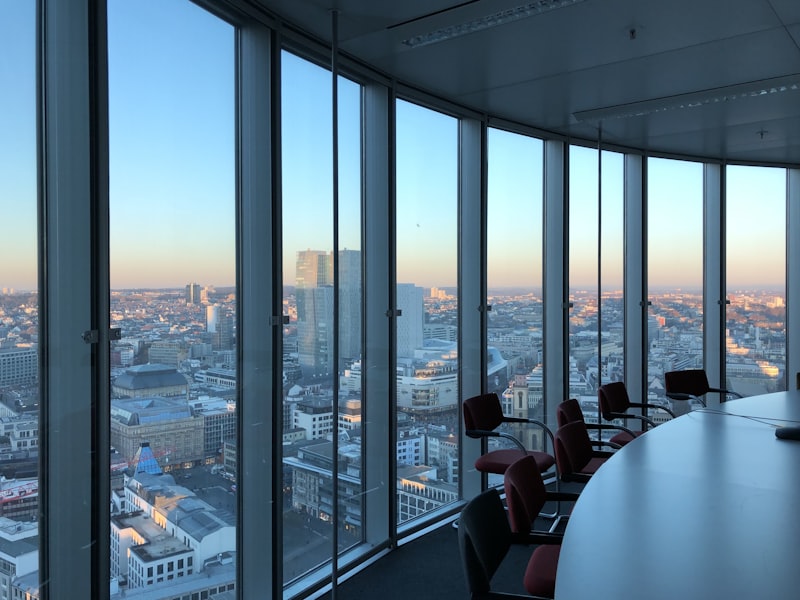When most people think of insurance, they envision policies covering their homes, vehicles, or health. But in the growing community of "preppers"—individuals actively preparing for potential societal collapse or large-scale disasters—a wholly different type of insurance market is emerging. These policies protect against scenarios most people never consider, from solar flares to electromagnetic pulses, pandemic outbreaks, and even the total breakdown of society.
The Growing Prepper Economy
Once dismissed as fringe survivalists, the prepper community has evolved into a sophisticated market with an estimated value of $10 billion annually in the United States alone. And where there's risk management, insurance companies aren't far behind.
"We've seen a 380% increase in inquiries about catastrophe protection policies over the past five years," explains Ryan Delaney, underwriting specialist at Contingency Insurance Partners, one of several firms now catering to the prepper market. "This isn't just about bunkers anymore—these are high-net-worth individuals and families looking for comprehensive protection against scenarios traditional insurance explicitly excludes."
The "Black Sky" Policy Revolution
The most comprehensive policies in this specialized market are known as "Black Sky" coverage, referencing widespread power outages that would leave the sky dark at night. These policies can cost upwards of $100,000 annually for comprehensive coverage, but they protect against catastrophes traditional insurance typically excludes with "act of God" clauses.
Standard Black Sky policies typically cover:
- Grid-Down Scenarios: Financial protection if electromagnetic pulse (EMP) or solar flares disable electrical infrastructure
- Supply Chain Collapse: Funding for alternative supply acquisition if normal distribution systems fail
- Evacuation and Relocation: Coverage for emergency transport to predetermined safe locations
- Alternative Currency Protection: Hedging against currency collapse through precious metals or cryptocurrency reserves
- Biological Event Coverage: Medical support during pandemic scenarios, including private medical staff
"These policies reflect a fundamental shift in how some clients view risk," says insurance analyst Maya Henderson. "Traditional insurance assumes societal continuity. Black Sky coverage assumes potential discontinuity—that the systems we rely on might temporarily or permanently fail."
From Silicon Valley to Wall Street: The Changing Face of Preppers
The stereotype of the doomsday prepper has shifted dramatically in recent years. Today's most sophisticated preppers are often tech executives, hedge fund managers, and high-level corporate leaders—individuals with the resources to prepare comprehensively and the analytical mindset to assess unlikely but catastrophic risks.
"About 40% of our Black Sky policyholders are from the technology sector, and another 35% are from finance," reveals Delaney. "These aren't people building bunkers in the wilderness—though some do have elaborate safe facilities. They're systematic thinkers who view this coverage as part of a diversified risk management portfolio."
Silicon Valley has become a particular hotbed for high-end prepper insurance. Tech leaders, who built careers identifying exponential changes and systemic vulnerabilities, are now applying the same analytical framework to potential societal risks.
One anonymous tech CEO who holds a comprehensive Black Sky policy explained his reasoning: "I spend my workday thinking about low-probability, high-impact technological risks. It would be inconsistent not to apply the same thinking to my family's security. Traditional insurance only works if the system itself remains functional. I'm hedging against scenarios where that assumption doesn't hold."
The Science of Catastrophe Modeling
Unlike conventional insurance, which relies on extensive historical data to calculate premiums, catastrophic risk insurance requires more creative modeling approaches. Firms specializing in this coverage employ interdisciplinary teams including epidemiologists, climate scientists, geopolitical analysts, and power grid specialists to assess unlikely but plausible disaster scenarios.
"We're essentially pricing the unpriceable," explains Dr. Eleanor Winters, catastrophe modeling specialist at Global Resilience Insurance. "How do you calculate premiums for events that have never happened in modern society? We've developed proprietary simulation models that draw on historical analogues, scientific projections, and complex systems theory."
The most sophisticated firms run thousands of complex simulations to identify cascade effects—how one system failure might trigger others. For example, how a regional power grid collapse could affect water purification, fuel distribution, food supplies, and civil order.
Asset Protection vs. Physical Survival
While coverage options vary widely, they generally fall into two broad categories: asset protection and physical survival support.
Asset Protection
These policies focus on preserving wealth through major disruptions, offering:
- Alternative Banking Systems: Secured access to assets even if traditional banking fails
- Digital/Physical Asset Conversion: Mechanisms to convert digital assets (cryptocurrency, etc.) to physical value stores (precious metals, land, commodities)
- Legal Recognition Insurance: Protection ensuring policy contracts remain enforceable even after significant societal disruption
- Property Defense Coverage: Financial support for securing and defending physical assets during civil unrest
Physical Survival Support
These coverage options focus on the policyholder's physical wellbeing:
- Emergency Extraction: Helicopter or private aircraft evacuation from danger zones
- Safe Location Establishment: Funding and logistics for creating secure retreats
- Private Security Forces: Contracted protection personnel activated during specified trigger events
- Medical Continuity: Private medical staff and supplies, including in scenarios where public healthcare is unavailable
- Resource Provision: Guaranteed delivery of food, water, and essential supplies
"The most comprehensive policies combine both approaches," notes Henderson. "They protect both the client's wealth and their physical safety, recognizing that in true catastrophe scenarios, these concerns become interconnected."
The Pandemic Effect
The COVID-19 pandemic produced a seismic shift in the catastrophe insurance market. What was once considered a niche product suddenly gained mainstream attention as previously unimaginable scenarios—lockdowns, supply chain failures, travel restrictions—became daily reality.
"Our policy inquiries increased by 1,200% between February and May 2020," says Delaney. "The pandemic was a wake-up call for many wealthy individuals who had never previously considered systemic risk. They watched global systems strain and sometimes break, and they began asking, 'What if it had been worse? What if the next one is?'"
The pandemic also changed how these specialized policies are structured. Pre-2020 policies typically treated biological events as low-probability scenarios. Post-pandemic, these events are given much more weight in risk calculations, and coverage options have become more sophisticated, with tiered response plans based on disease severity and geographic spread.
From Individual to Community Protection
A fascinating evolution in the prepper insurance market is the rise of community coverage—policies that protect not just individuals or families but entire communities of like-minded people.
"We've seen growing interest in what we call 'resilience communities,'" explains community insurance specialist Dr. Marcus Chen. "These are groups of clients who pool resources to establish secure locations with shared infrastructure—power generation, water purification, food production, medical facilities, and defense capabilities."
These community policies offer cost advantages through economies of scale while providing a critical element often missing from individual prepper plans: social infrastructure. Research on disaster resilience consistently shows that community connections often determine survival and recovery success as much as physical resources.
Sophisticated community policies include:
- Shared Resource Management: Systems for fair allocation of community resources
- Skills Banking: Documentation and utilization of community members' survival-relevant skills
- Governance Structures: Pre-established decision-making protocols for emergency scenarios
- Tiered Access Systems: Frameworks for potentially integrating additional people beyond initial policyholders
The Ethics and Criticisms
The rise of high-end catastrophe insurance has not been without controversy. Critics argue that these policies represent a troubling trend of wealthy individuals planning private escapes rather than contributing to systemic resilience that would benefit everyone.
"There's something deeply unsettling about the idea that those with means can effectively opt out of societal collapse while everyone else suffers the consequences," argues sociologist Dr. Eliza Montgomery, who studies disaster inequality. "Instead of investing in private bunkers and extraction teams, that money could strengthen public infrastructure and community resilience."
Some insurance providers have responded to these criticisms by incorporating community benefit components into their policies. For example, several firms now offer premium discounts to clients who invest in local community resilience initiatives or who agree to include public benefit components in their emergency response plans.
"The most forward-thinking clients recognize that true security can't exist in a vacuum," says Chen. "Even the most comprehensive individual protection is enhanced by being embedded within resilient communities and societies."
The Future of Catastrophe Insurance
The specialized insurance market for preppers and catastrophe protection continues to evolve rapidly. Recent innovations include:
- Space Weather Coverage: Protection against solar flares and other astronomical events that could disrupt global communications
- AI Disruption Insurance: Emerging policies that address potential societal disruption from artificial intelligence developments
- Climate Migration Coverage: Forward-looking policies that address potential mass population movements due to climate change
- Knowledge Preservation Systems: Services ensuring critical knowledge remains accessible after significant disruption
As traditional insurers increasingly exclude climate-related disasters and other growing threats, this specialized market is positioned for significant expansion. Industry analysts project the catastrophe insurance market to grow from approximately $2 billion in premiums currently to over $12 billion by 2030.
"What we're seeing is the privatization of civil defense," concludes Henderson. "During the Cold War, the government built bunkers and established continuity plans. Today, those with resources are taking that responsibility upon themselves, and the insurance industry is responding with increasingly sophisticated products."
Whether viewed as prudent preparation or dystopian inequality, one thing is clear: in an era of increasing uncertainty, the business of insuring against the end of the world as we know it is booming.






